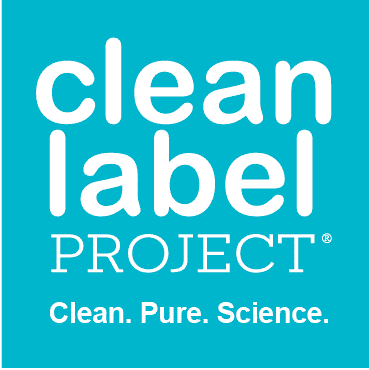Clean Label’s Response to PETFOODINDUSTRY.com
Clean Label Project’s Response to
PetFoodIndustry.com
On the Pet Food Industry’s home page today, May 17, 2017, it states that “the pet food market will come to resemble the baby food market, with a focus on ingredient quality and pet food safety.” With that in mind, here are some object lessons that we think can be learned from the baby food market:
- According to IRI, sales of baby food have declined more than 4% per year on average since 2005.
- According to one of the leading baby food companies, 70% of parents have taken to cooking at least some of their baby food at home out of a heightened awareness and concern of what is in and what’s NOT in the food they feed their families.
- As reported in the New York Times, what the baby food category did not pay attention to over the past decade was the silent and pernicious trend of mothers making their baby’s food at home because they did not like what was on store shelves
If Pet Food Industry purports that the industry is indeed on the path to resembling the baby food category, then the industry is going to need to learn the same lessons that the baby food industry did: consumers will no longer tolerate an industry that dismisses food safety and quality. It is for this reason that we were baffled and dismayed to see the recent blog post by Ms. Debbie Phillips-Donaldson, editor-in-chief of Pet Food Industry, in which she dismisses the shocking implications of Clean Label Project’s recent pet food report out of concerns as trivial as whether our name is appropriate. This industry has been rocked by scandal after scandal, recall after recall, and Ms. Phillips-Donaldson believes that there is no possibility that what we have said is true or important? Brands have made billions of dollars selling false comfort and security to pet owners, but Ms. Phillips-Donaldson is concerned whether a small non-profit makes 4% off Amazon sales? Ms. Phillips-Donaldson objects to our relationship with a third party test lab, a business model that is aligned with trailblazing consumer movements including Certified Organic, and Non-GMO Project, while Pet Food Industry itself is apparently for industry, by industry? That we show average heavy metal concentrations a hundred times higher than anything we saw in the baby food category is trumped by the fact that it takes a three person staff a few days to respond to a media inquiry? It seems to us that Ms. Phillips-Donaldson is asking the wrong questions. So let us ask some questions of our own.
If pet food industry is on a quest to have the quality and safety of the baby food industry, then let us help the industry level set. Here is how the bottom 5% of the pet foods we tested compared to the bottom 5% of the 700 baby foods we’ve tested to date:
The Pet Food Industry blog accused us of not being forthcoming with our data. How’s this for data: the bottom 5% of pet food has mercury levels 187 times higher than the worst-offending baby foods – and remember, the baby food industry was shaken by a crisis of consumer faith because consumers felt those levels were unacceptable. So tell us, Ms. Phillips-Donaldson, does it seem like we’re exaggerating when we say that the pet food industry has a long way to go if they want to be as clean as the baby food industry?
How is it possible that in an industry projected to generate $74.8 billion in revenue in 2017, and likely to reap billions in profits, that the vast majority of pet food companies conduct no routine testing on environmental toxins?
Consumers and industry, contrary to the way that Ms. Phillips-Donaldson represented Clean Label Project while safe within the echo chamber of positive industry affirmation, let us tell you what Clean Label Project is all about:
- Clean Label Project believes that consumers deserve to know what is in, and what’s not in, the food they feed themselves and their families, including their pets.
- Clean Label Project believes that the pet food industry is rampant with what economists call information asymmetry — in this case the idea that brands may know more about their products than consumers do. We believe that if consumers knew about this, they would make different purchasing decisions.
- Clean Label Project believes that environmental contaminants and toxins are dangerous to all living things, and that best practice for companies purporting to sell safe food is to actively seek to reduce contaminant levels – not to pretend all is well.
- Brands should never be surprised over the content of their products – because brands should have rigorous quality ingredient sourcing standards, and product specifications for all contaminants and toxins.
One final question and challenge to Ms. Phillips-Donaldson and the rest of the industry she champions is to look at our numbers through the lens of a consumer and under the priorities that your own magazine has identified. Recognize that, per a survey from Rover, 94% of consumers consider pets to be part of the family. And the industry is clearly aware of this: claims like “natural,” “human-grade,” and “feed them like family” saturate industry packaging. Look at our numbers and answer this: would you feed this to your family? Answer carefully, because we assure you that the 25,000 unique consumer visitors to our website per day are certainly paying attention.
